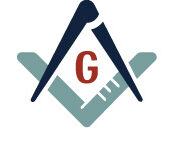Our own Bro. Peterson is graduating from Temple University. As part of his senior thesis, he has written an extensive paper on Mozart and the masonic influences hidden in the composer’s work. The following sample is paraphrased from Bro. Peterson’s research:
In the mid-18th century, the Austrian government began to suppress secret societies and other exclusive groups, namely the Illuminati. The disbandment drove many of those former groups into the ranks of Freemasonry, which was left unscathed by the ban. Freemasonry reached its height in Vienna when Mozart joined the Lodge Beneficence in year 1784, before ultimately moving to True Harmony Lodge, home of the “Enlighteners.”
Prior to this period, all masonic music was either a simple drinking song, borrowed from an already established tune, or both. Mozart wrote several masonic works including songs to be sung for funerals, fraternization and degrees, in addition to famous masonic-themed operas such as The Magic Flute.
Within his pieces, Mozart would interweave masonic symbolism. He would frequently use keys with three sharps or flats (symbolic of the “three knocks” any Freemason is familiar with).
He also employed specific keys to evoke specific feelings, e.g.: c-minor was a serious and contemplative key, whereas c-major was a key of clarity and light (symbolic of the ritual of being brought from darkness to true masonic light.) He also incorporated ¾ time signatures, connecting motivic material to symbolize the chain-like march of “traveling freemasons.”
